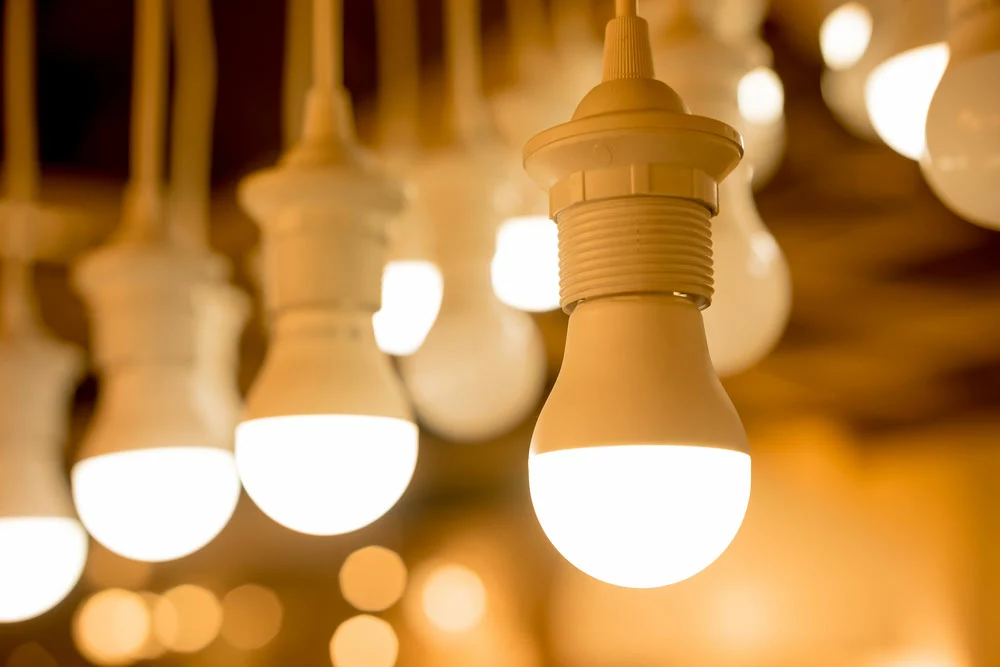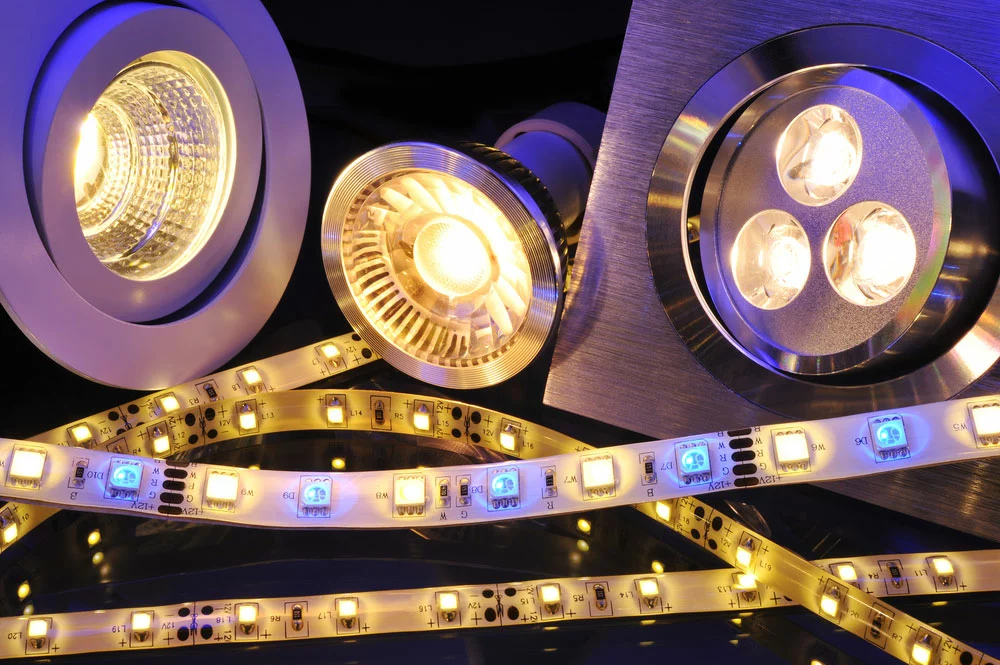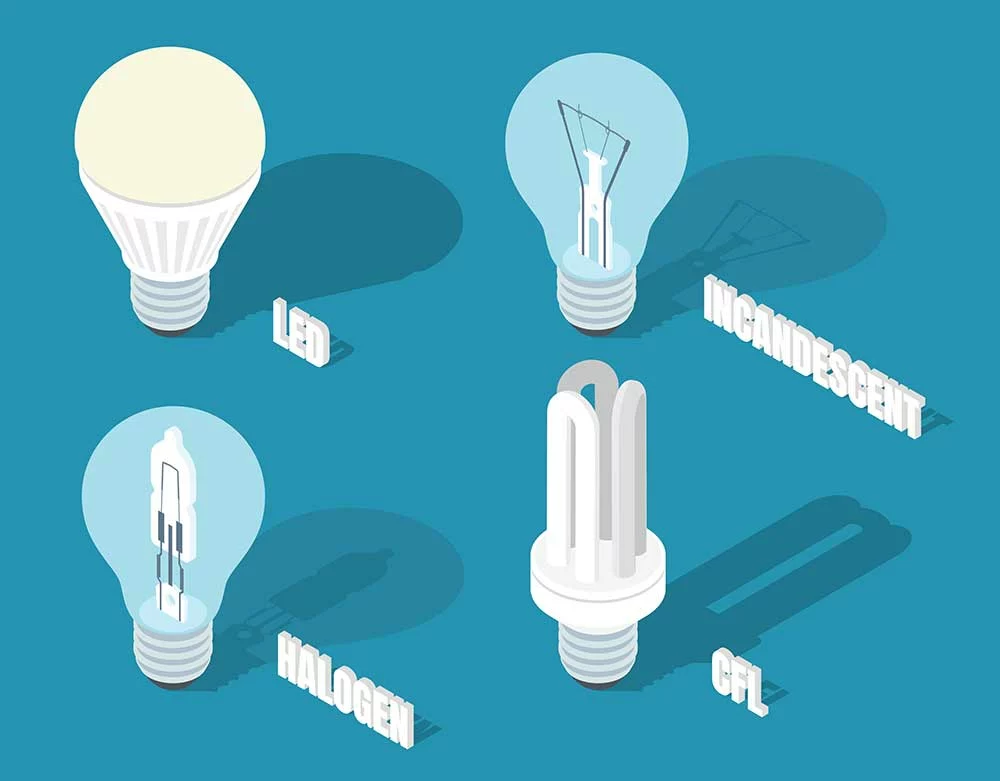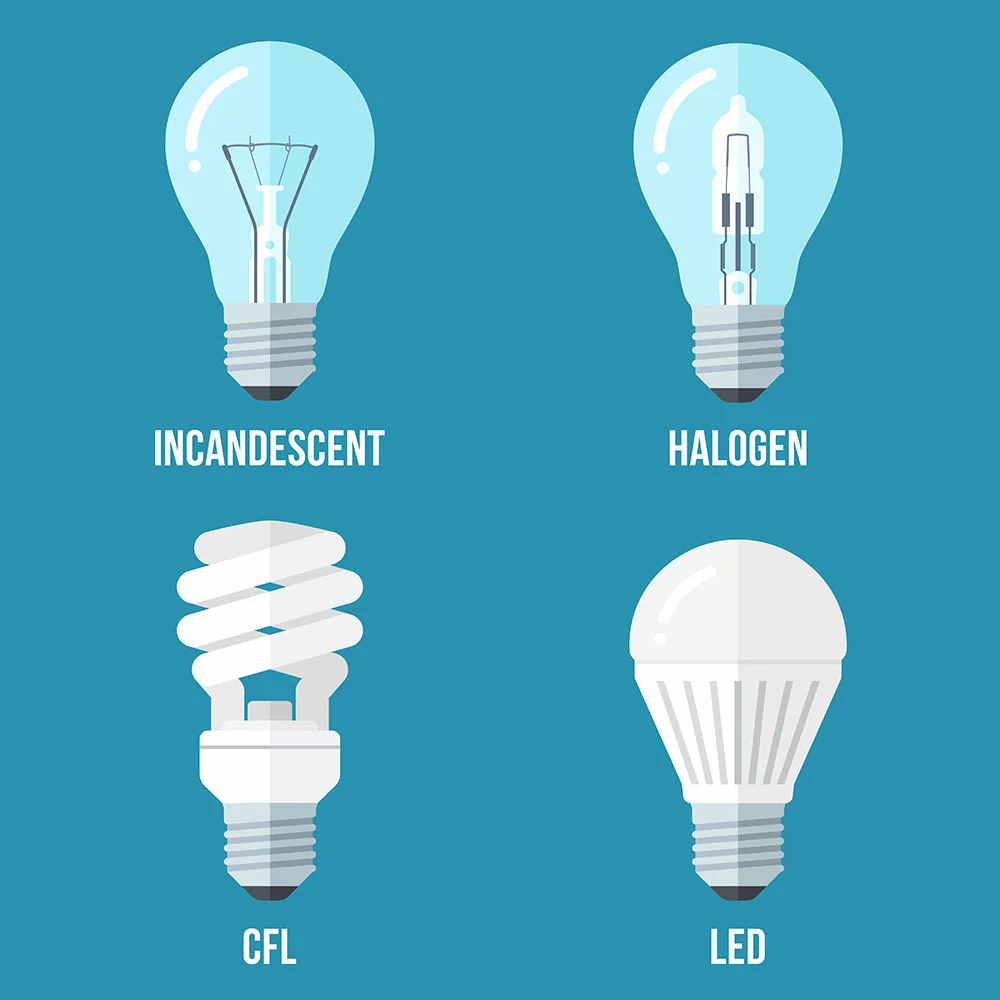The CFL vs. LED lights debate has raged for years, but with the rise of LEDs, more and more people are switching to them.
The question is: does the CFL still have a place in your home?
We’ve broken down the pros and cons of both types of bulbs so you can decide which one is right for you.
CFL vs. LED: Definition

LED lamps
The most common light bulb you’ll find at the hardware store is the incandescent bulb.
These bulbs pass electricity through a thin wire filament to heat it and produce light. However, they’re inefficient because most of their energy gets lost as heat rather than light.
CFLs and LEDs are two of the most energy-efficient light sources available today. While the two technologies are similar, they each have unique advantages and disadvantages.
LED stands for light-emitting diode. This semiconductor emits visible light when an electric current flows through it.
CFL stands for Compact fluorescent lamps. It is a fluorescent lamp containing mercury and argon gas, and a phosphor coating on its inner surface glows when electricity passes through it.
CFL vs. LED: Working Principle

different current LEDs
CFL vs. LED lights are both popular options for home lighting, but they work very differently.
CFLs contain mercury vapor within a tube filled with argon and nitrogen gases. When electricity flows through this mixture, it gets hot enough to emit visible light through fluorescence. In other words, the electricity excites electrons in atoms in the tube.
Fluorescent lights are less expensive than incandescent bulbs but use more energy than LEDs.
LEDs work by converting electricity into light using semiconductor technology.
Because of this, LEDs don’t need any gas, making them more efficient and easier to install. They also last longer than fluorescent bulbs — about 50,000 hours or more — so you’ll have fewer replacements over time.
CFL vs. LED Comparison

Different types of light bulbs
LeLet’sake a look at CFL vs. LED lights.
Energy Efficiency
While both CFL and LED lights save energy compared with incandescent bulbs, LEDs are more efficient than CFLs. Compared to CFL bulbs, LED lights to use about 33 percent less energy. An incandescent bulb uses roughly 75 percent as much energy as a CFL.
LED light bulbs are quickly becoming more popular than traditional incandescents and CFLs. They’re CFL more efficient, last longer, and can be found in various shapes and sizes.
Longevity

CFL bulb
LEDs are designed to last longer than CFLs, which have a typical lifespan of 10,000 hours. While they are more expensive initially, they save more energy and replacement costs. This is especially important for customers who want to replace their bulbs.
Light Quality
It is now possible to purchase CFL lights in various colors and types of light. However, CFL lights are known for their crisp white light. They have a much whiter color temperature than incandescent bulbs, making them a good choice when you want to create a bright and clean look in your home.
There was a time when LED lights produced only one type of light, but now a more comprehensive range of colors is available. The main difference is that LED lights have more of a blue spectrum in their light than CFLs do. This gives them a more relaxed feel and can make them appear brighter than they are.
Cost
A pack of six CFL bulbs costs around $22, while a group of six LED bulbs costs around $30. In both cases, the most significant difference is in the bulbs, not the fixtures or installation fees. It usually costs around $10 to $20 to install a new institution that matches either of these bulbs.
Environmental Impact
CFLs contain mercury, which is harmful to the environment if not disposed of properly. This is why many states have banned them from landfills or recycling centers.
While this is a benefit for CFLit’st’s also a drawback because it can’t be recycled easily (if at all). The EPA recommends only disposing of broken CFLs at a hazardous waste facility.
Since LEDs do not contain mercury, they are less hazardous. In most cases, they can be recycled or disposed of in a standard manner.
FAQs
Which is better, CFL or LED?
LEDs are the better choice when it comes to energy efficiency. While they might be more expensive, they eliminate toxic mercury and protect the planet.
Is CFL brighter than LED?
LED is a better option if you want to save money and energy. But if you are looking for brighter lights, the answer is CFLs. CFLs produce more light than LEDs.
Summary

Vector illustration of the incandescent light bulb, halogen lamp, CFL, and led lamp
LEDs are the clear winners regarding energy efficiency and environmental friendliness. LED lights do not contain mercury, unlike CFLs. In addition, LEDs use less energy compared to CFLs and last longer.
If you got any questions about LEDs or CFLs and whether they are the right fit for your needs, feel free to contact us or leave a comment below.
